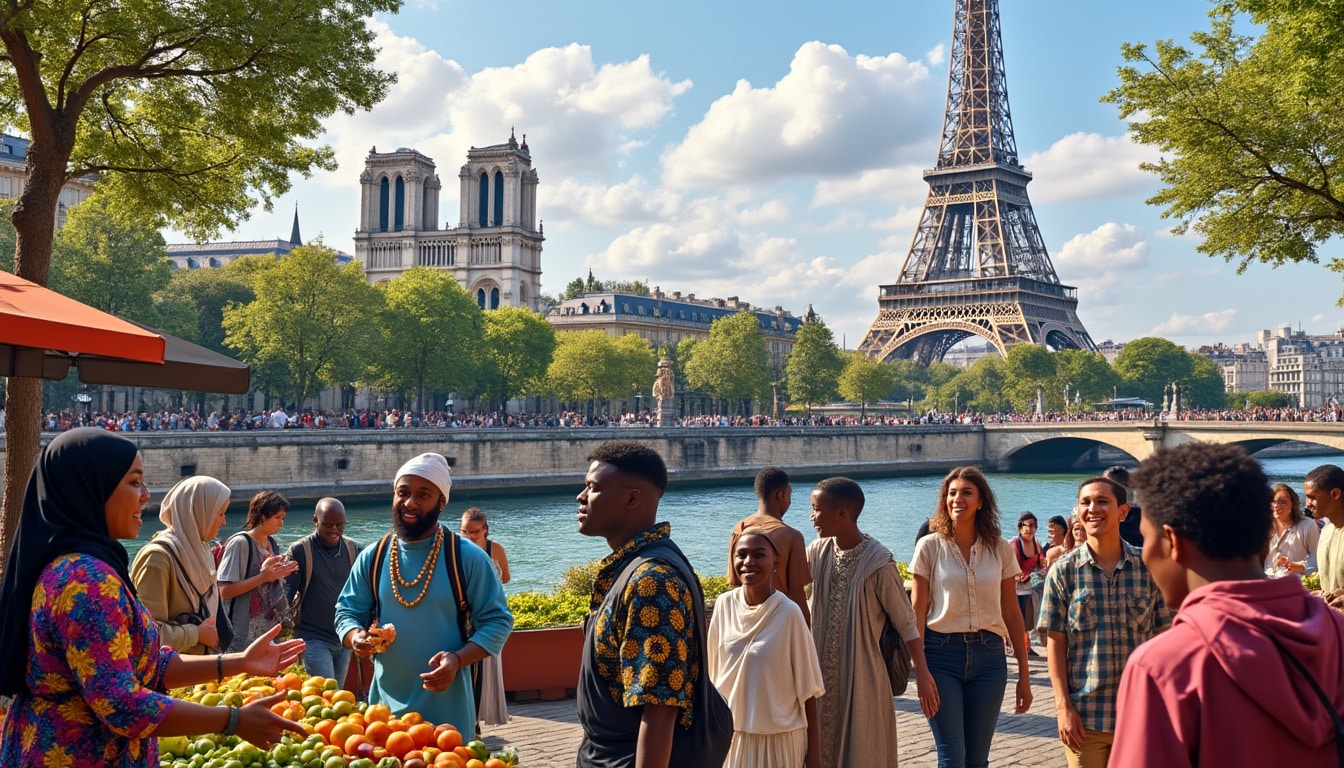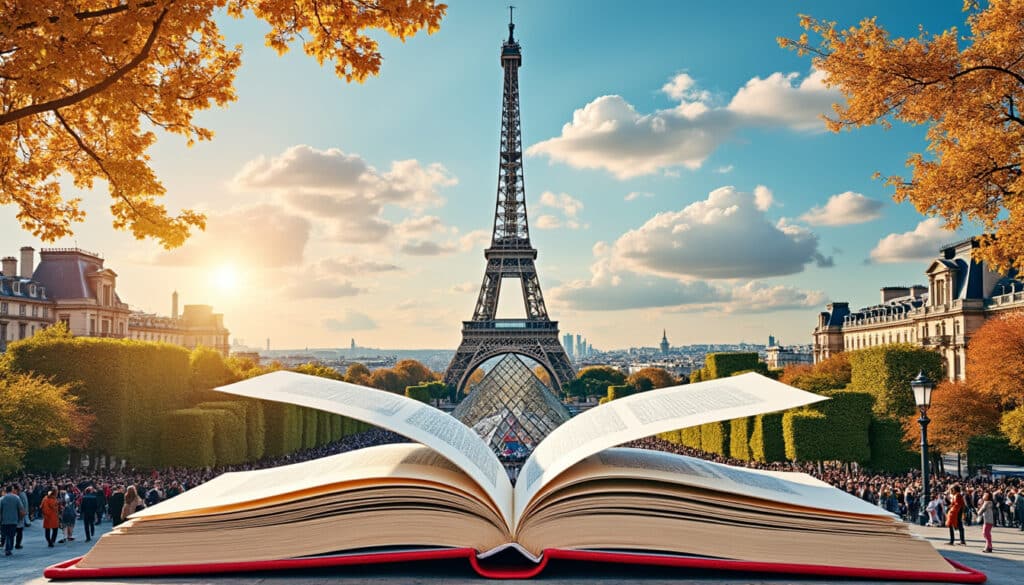Paris, the City of Lights, is not just renowned for its breathtaking landmarks and artistic flair but also for its rich demographic tapestry and fascinating geography. The capital of France is a bustling metropolis that has seen significant transformations over the years, reflecting both historical resilience and contemporary dynamism. This article delves into the intricate details of Paris’s demographics, exploring how they have evolved and what makes this city a unique hub of cultural amalgamation. Equally, we will uncover the geographical elements that shape Paris, its surroundings, and its role as a vital European metropolis.
Demographic Dynamics of Paris: A Tale of Growth and Change
Paris’s demographic landscape is a testament to its ever-evolving identity. With a current population of approximately 2,188,000 inhabitants, Paris is the most densely populated city in Europe, covering a vast area. A significant aspect of its demographic evolution is the fluctuating population trends observed over the years. For the past two decades, the number of inhabitants has shifted slightly, showing variations within a margin of +/- 0.5% annually. This shift marked the end of a prolonged period of depopulation that characterized much of the latter half of the 20th century.
Understanding these demographic shifts requires examining the factors driving population changes in Paris. Three main contributors have been identified:
- ✨ Demographic factors: Analyzing birth and death rates is crucial in comprehending the population dynamics. The birth of children, especially in the late 1990s to early 2000s, contributed significantly to population growth.
- 🏠 Housing stock and occupancy: Paris’s housing market, characterized by a dense urban setup, influences its demographics. Changes in housing policies and development play a role in accommodating population growth or decline.
- 🚇 Residential migration: Movements due to opportunities for education, employment, and lifestyle preferences have led to an influx and outflux of residents, impacting the city’s demographic composition.
Interestingly, Paris also boasts a unique household structure. According to recent surveys, one out of every two households in Paris is composed of a single individual. Additionally, about 22% of households encompass families with at least one child under the age of 25, totaling 254,800 families. This statistic underscores the diversity in living arrangements, from bustling family homes to tranquil single-person abodes.
| Year | Population | Pertinent Factor |
|---|---|---|
| 2000 | 2,150,000 | Shift in birth rates |
| 2010 | 2,220,000 | A wave of migration |
| 2020 | 2,180,000 | Increased housing initiatives |
| 2025 | 2,188,000 | Stable growth |
Additionally, Paris attracts approximately 3.5 million people daily, including workers, students, and tourists. Among them, 79,000 tourists visit every day, lured by the city’s rich history, gastronomy, and attractions such as the Eiffel Tower and the Louvre Museum.
Paris’s Geographical Layout: More Than Just the Seine
Geographically, Paris is a city of enchanting features that complement its vibrant demographic profile. Located centrally in northern France, Paris stretches along the glimmering waters of the River Seine. This positioning has historically established Paris as a strategic economic and cultural hub. The city’s geography is characterized by its iconic arrondissements, each a microcosm of cultural and social life.
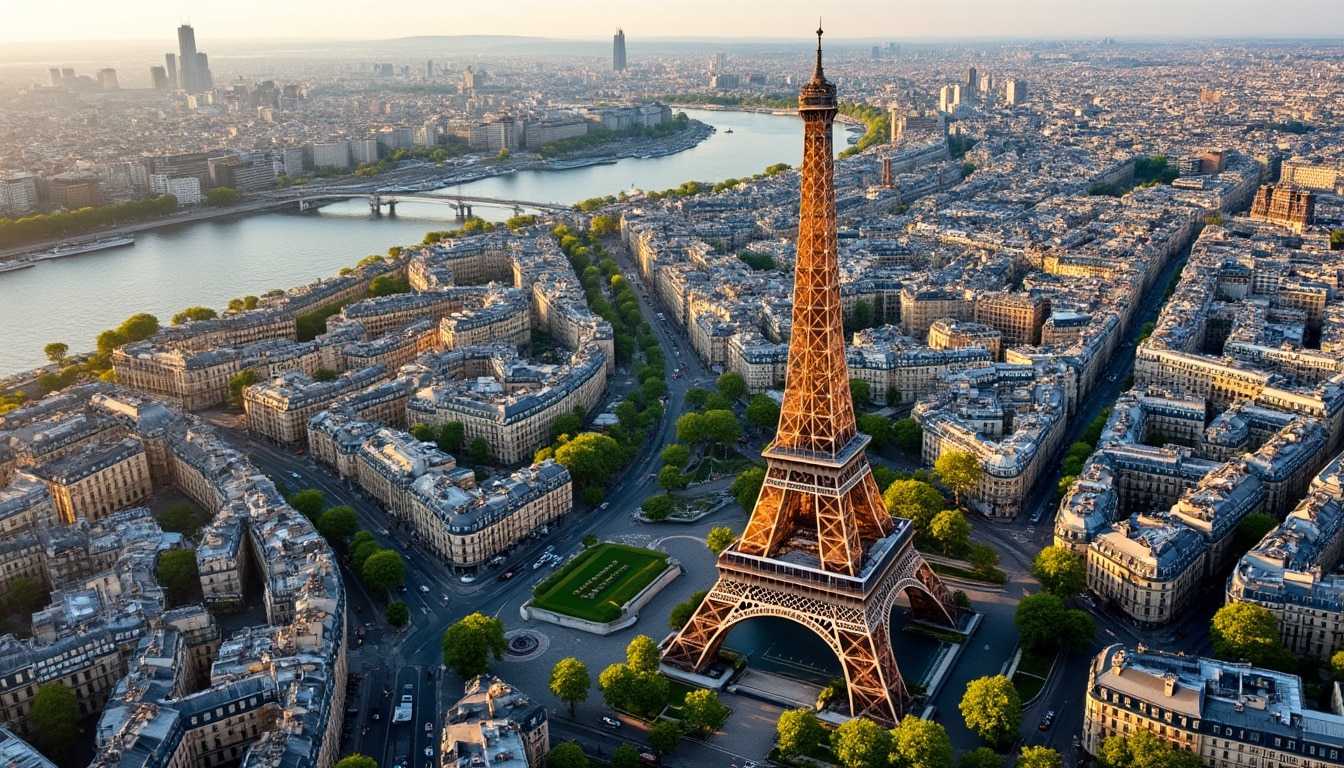
The River Seine, meandering through the city, not only offers picturesque landscapes but also serves as a crucial artery for commerce and recreation. In fact, the Seine is central to the city’s romantic image, with leisure boats and scenic riverbanks drawing both locals and visitors.
Paris is encircled by the Périphérique, a ring road that demarcates the city limits. This boundary, however, does not restrict the city’s influence on surrounding regions. The greater Paris metropolitan area, called the Île-de-France, expands beyond these confines, hosting an additional 9 million people.
Here’s a brief look at the geography that defines Paris:
- 🌉 Bridges: Paris is renowned for its stunning bridges like the Pont Alexandre III and Pont Neuf, linking different parts of the city and offering spectacular views.
- 🌾 Parks and Boulevards: The city boasts expansive green spaces such as the Jardin des Tuileries and Bois de Boulogne, contributing to the urban ecosystem.
- 🏛️ Historic Sites: The geography of Paris includes significant historic sites like Notre-Dame Cathedral, which add layers of historical charm.
In understanding Paris’s geography, weather elements also play a part. Paris has a typical Western European oceanic climate, marked by moderate summers and mild winters, shaping the lifestyle of Parisians and tourists alike.
The Significance of Arrondissements
Paris’s administrative organization into 20 arrondissements is not just a matter of governance but also an embodiment of its diverse cultural landscape. Each arrondissement, spiraling outwards from the center like a snail shell, houses unique neighborhoods with distinctive identities.
The initial arrondissements, starting from the Louvre and the Marais, are steeped in history and culture, attracting tourists with their artistic gems and high-end shopping. Fashion giants like Chanel, Dior, and Louis Vuitton have their flagship stores here, adding to the city’s glamor.
Further from the center, the arrondissements shift to residential and commercial zones, accommodating a diverse population. The 18th arrondissement, for example, renowned for Montmartre, draws artists and bohemians in droves.
Transport Infrastructure: the Veins of Paris
No exploration of Paris’s geography would be complete without delving into its meticulously planned transport network. The city is served by an extensive network that includes the famous RATP for public transport, SNCF for regional and national travel, and globally renowned airports like Charles de Gaulle, a hub for Air France.
강력한 예로, when considering transit solutions within Paris, think about the metro system that consists of 16 lines, each serving distinct areas while interconnecting the entire city seamlessly. The rail system is a lifeline for residents and tourists, making Paris easily navigable.
Parisian Lifestyle and Social Composition
Paris is much more than its physical attributes. It is a melting pot of cultures, generations, and social classes, all coalescing to form a vibrant tableau. The city’s social fabric is as layered as its demographics, with both historical neighborhoods and modern innovation coexisting.
The flavor of Paris is greatly influenced by its residents and their traditions. The Parisian palate is known for its particular fondness for culinary prowess, evident in the ubiquitous presence of the Baguette de Pain and exquisite Patisserie creations.
Paris Fashion Week, one of the most significant fashion events globally, encapsulates the city’s trendsetting nature, drawing designers, models, and fashion enthusiasts from every corner of the world.
The unique social makeup is enriched further with a diverse immigrant population that has introduced new cultural practices and cuisines, integrating seamlessly into Parisian life.
Let’s take a look at some social statistics:
| Social Aspect | Details |
|---|---|
| Single-person households | 50% |
| Family households | 22% |
| Daily Influx | 3.5 million (including 79,000 tourists) |
The diverse demographics foster a robust local economy and aid in sustaining a multicultural society.
Cultural Pulse: The Heartbeat of Paris
The cultural pulse of Paris is undeniably vibrant and continuously evolving. Cultural institutions, from the Louvre to intimate art galleries, serve as hubs of intellectual and creative exchange. With the presence of world-renowned companies like L’Oreal in the city, offering both economic support and creative flair, Paris’s cultural and economic landscape is vibrant and dynamic.
Paris also stands as a beacon of education and intellectual pursuit, with institutions such as the Sorbonne University providing a global platform for academia and research.
Integrating Geography with Economic Prosperity
Paris’s geographical advantages have long complemented its economic prosperity. The city’s location makes it a focal point for trade and commerce, not only within France but also throughout Europe. The strategic integration of riverbanks, transport networks, and land development strengthens its role as a central economic powerhouse.
Economically, Paris harbors a diverse range of industries and enterprises. Whether it’s the historic fashion houses like Louis Vuitton and Dior, or emerging tech startups, the city serves as a global business hub.
Let’s overview some key sectors contributing to Paris’s thriving economy:
- 📈 Tourism: Encompassing cultural tourism, fashion tourism during Paris Fashion Week, and culinary experiences.
- 👜 Luxurious Retail: Flagship stores of global brands provide a persistent appeal to world travelers and shoppers.
- 🖥 Technology & Innovation: Hosting tech fairs and incubators, Paris fosters a burgeoning tech scene.
- ✈️ Aviation: Supported by busy international airports, including Charles de Gaulle, a major hub for Air France.
Despite the bustling economic scene, Paris remains attuned to environmental challenges, particularly flooding due to the Seine’s fluctuations and climate variability. Efforts to mitigate natural risks are underway, offering a balanced approach to development and sustainability.
Paris’s economic narrative is tied intricately with its geographical features, ensuring sustainable urban development catching the eye of investors and travelers worldwide. The integration of natural and urban plans renders it one of the most attractive cities for potential residents and businesses.
Adaptive Strategies: Meeting Future Challenges
As Paris steps into future ventures, navigating demographic, geographical, and economic challenges becomes crucial. The city needs to consider the following strategies:
- 🔍 Enhancing urban infrastructure to accommodate the growing population.
- 🌐 Promoting cultural inclusivity to strengthen multicultural integration.
- 🌱 Committing to sustainability by advocating for green technology.
Paris stands resilient, ready to mold its urban landscape and demographic nuances into a harmonious and progressive entity.
FAQ: Mastering Paris’s Geography and Demography
- What is the most populated district in Paris?
The 18th arrondissement, including Montmartre, is among the most densely populated areas.
- How does Paris handle its daily influx of people?
The city’s extensive transport system, RATP, SNCF, and bike-sharing programs help manage the influx effectively.
- What role does the River Seine play in Paris’s economy?
The Seine is vital for commerce, tourism, and has historically been a strategic channel for trade.
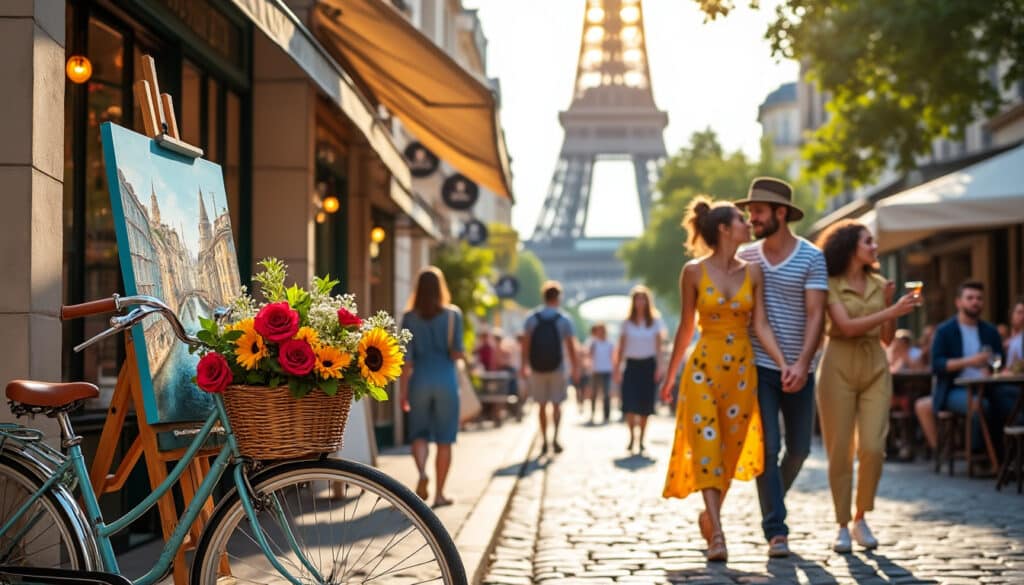
Fun Facts & Curiosities About Paris
Paris, often lauded as the City of Light, is famous for its iconic landmarks like the Eiffel Tower, Notre Dame Cathedral, and the Louvre Museum. Yet, there exists a treasure trove of fascinating facts and curious anecdotes that make Paris…
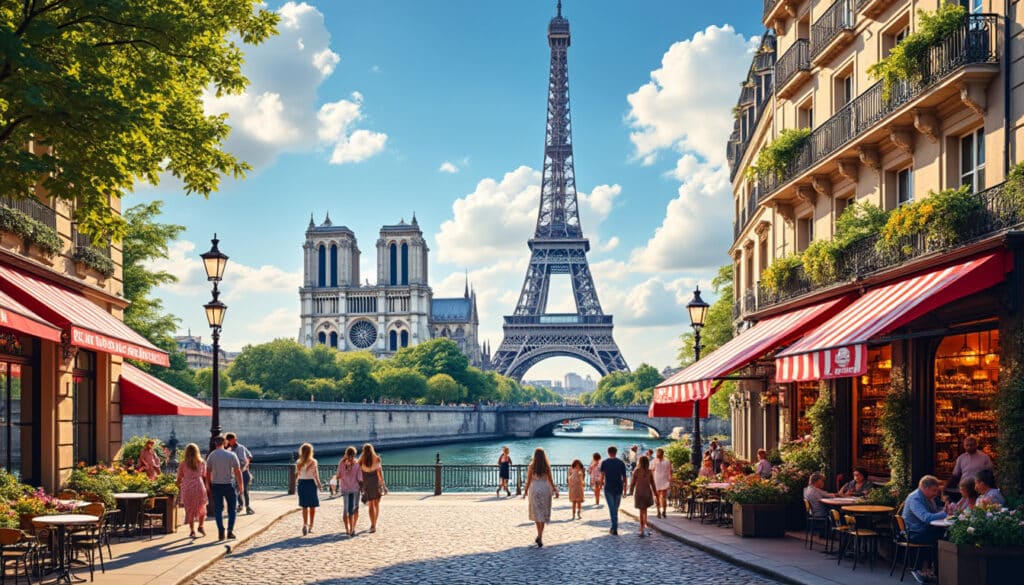
Architecture and urban features of Paris
Paris, the enchanting capital of France, is synonymous with architectural elegance, offering a tapestry of styles that narrates the story of the city’s evolution through the ages. From the towering Gothic structures to the refined lines of Haussmannian facades, each…
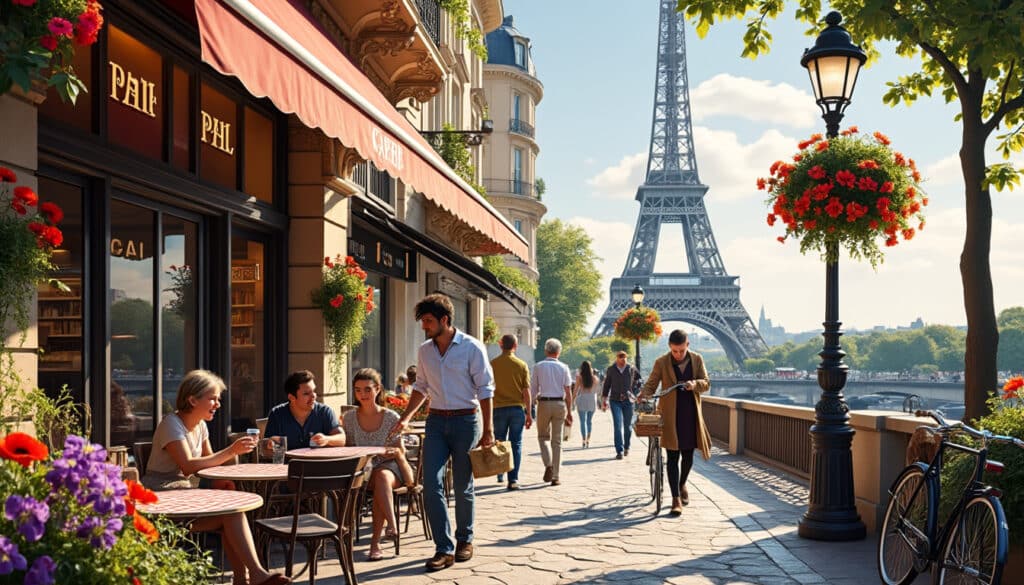
Daily life in Paris is a fascinating blend of art, culture, history, and modernity. From the moment you wake up to the delightful aroma of freshly baked baguettes at your local boulangerie, to the evening’s social buzz at chic bars…
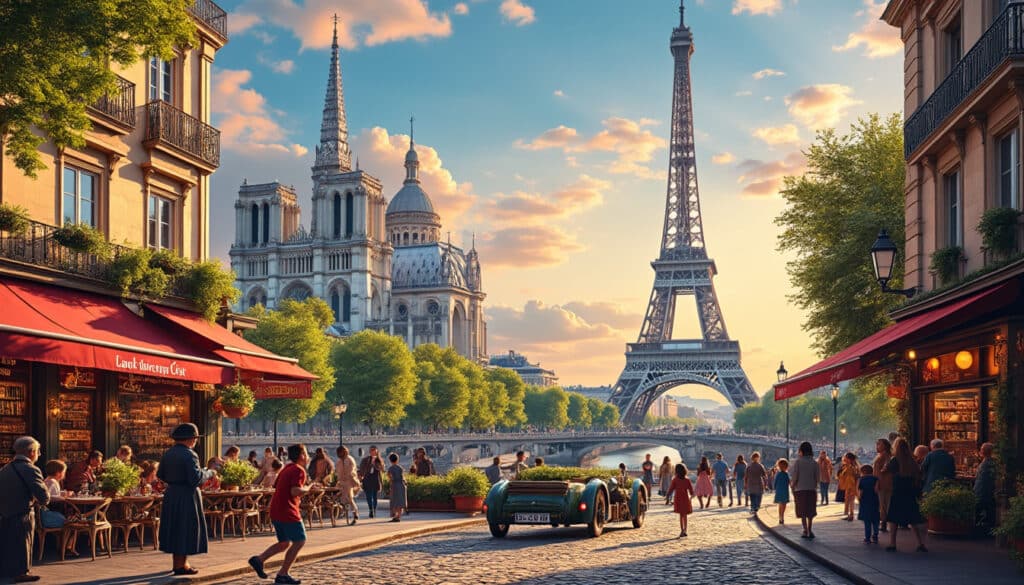
The History of Paris is a captivating tapestry woven from a myriad of cultures, historical events, and architectural marvels. From its origins as a Celtic settlement to becoming a global epicenter of art and politics, Paris has transformed profoundly over…
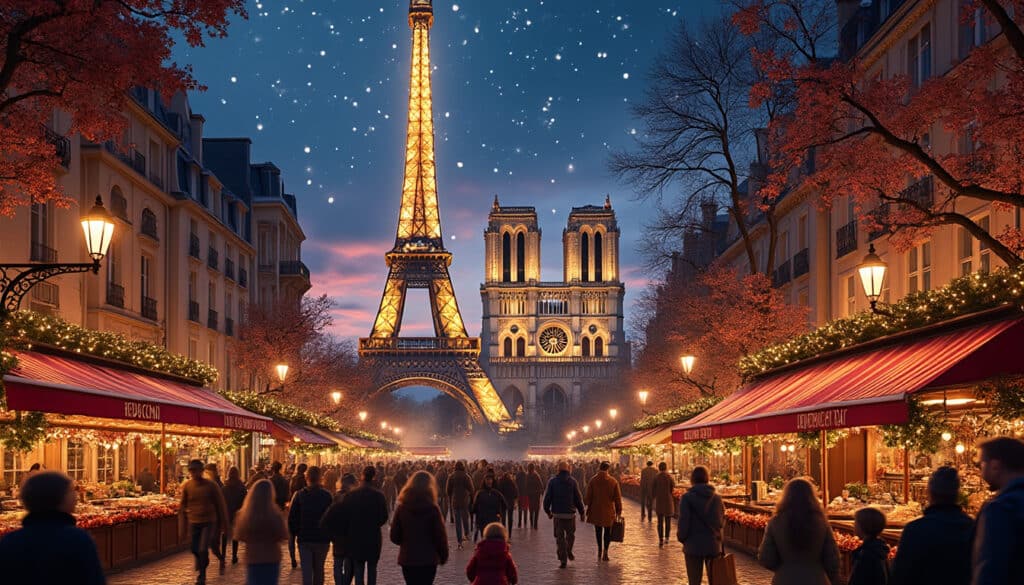
Holidays and celebrations in Paris
Paris, the City of Lights, is known for its rich history, vibrant culture, and iconic landmarks. But beyond the Louvre and the Eiffel Tower lies a tapestry of celebrations that bring the city to life throughout the year. From religious…
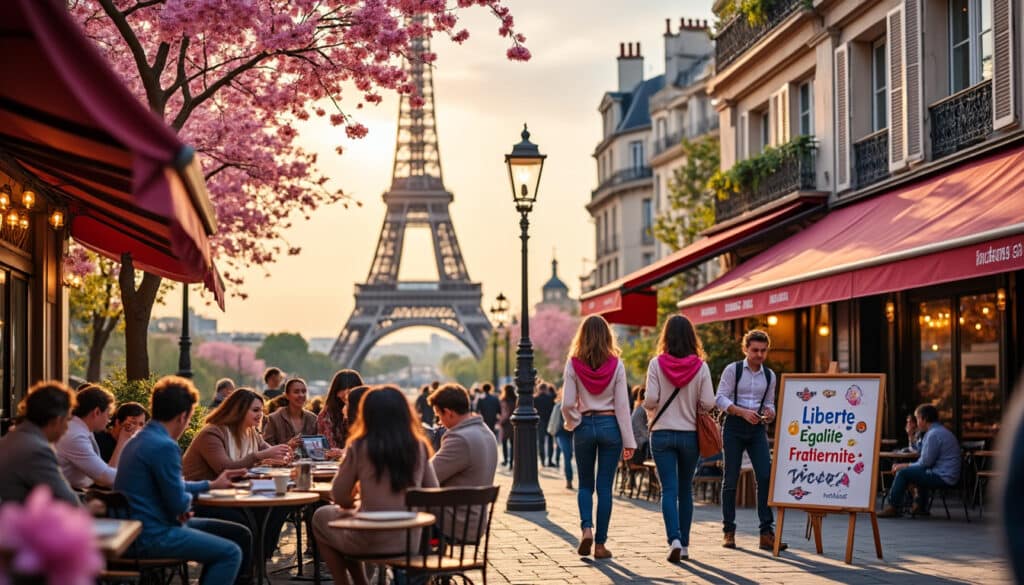
Language and spelling of Paris
Paris, the iconic City of Lights, is not only a hub for art, history, and fashion but also a melting pot of languages and cultures. For many travelers and expatriates, understanding the linguistic nuances of Paris is as essential as…
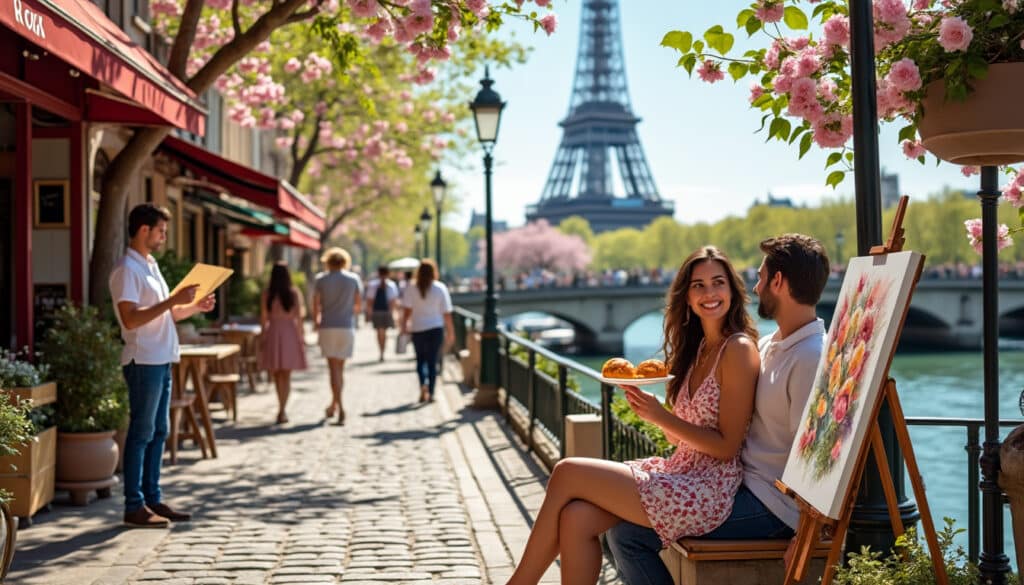
Local tips for tourists in Paris
Paris, often referred to as the “City of Light,” is a timeless destination that attracts millions of tourists every year. However, truly experiencing Paris as a local can unravel a different side of this enchanting city, one that is filled…
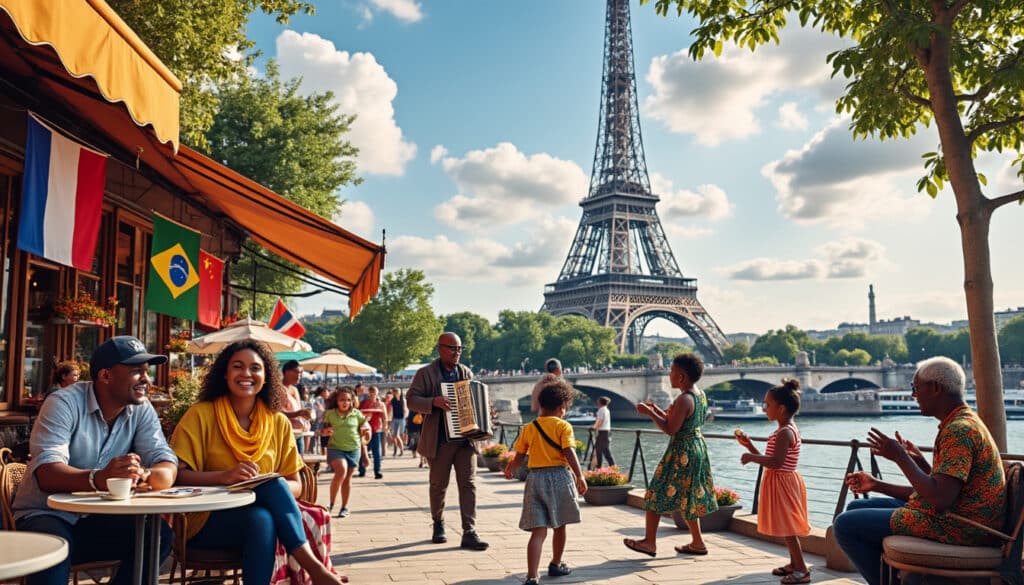
Names, flags, and identity of Paris
Paris, the City of Light, is not only celebrated for its iconic monuments such as the Eiffel Tower, but it is also a hub of cultural richness and historical depth that goes beyond its visual grandeur. From its age-old symbols…
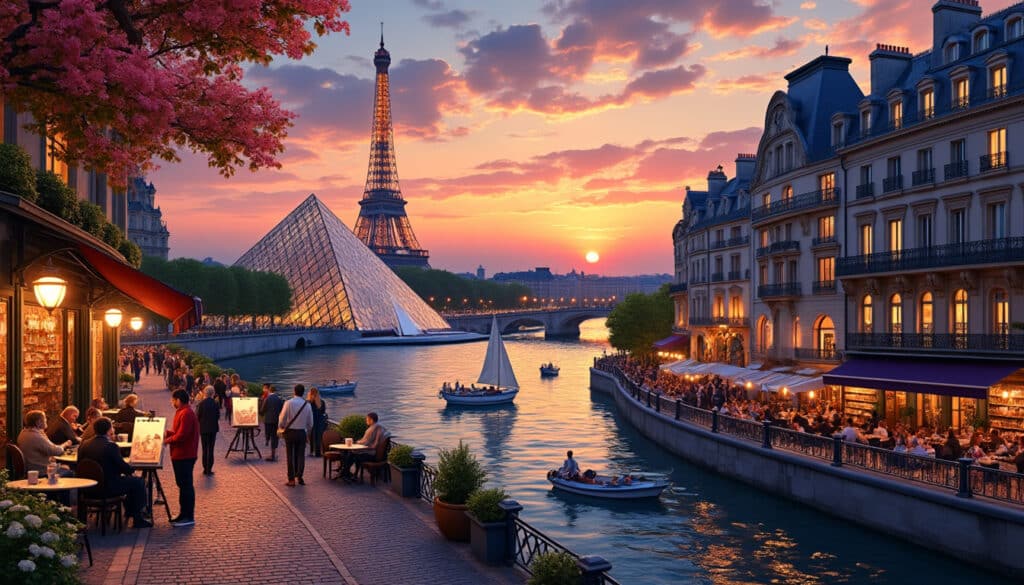
Reputation and identity of Paris
Paris, the illustrious capital of France, has long stood as a beacon of art, culture, and history, drawing millions of visitors annually who are captivated by its unique charm. Renowned as the “City of Light,” Paris is celebrated for its…
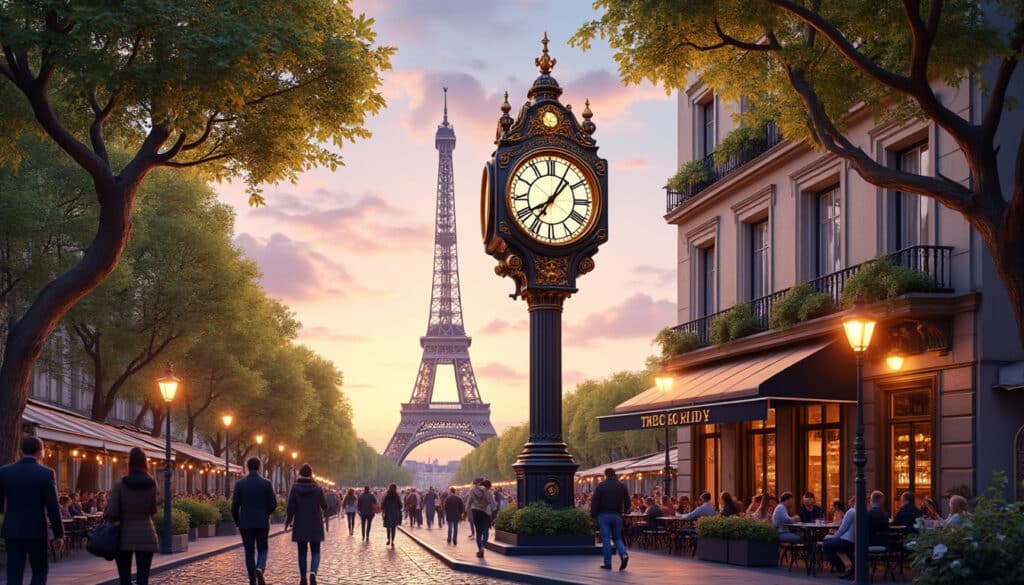
The vibrant city of Paris, France, is not only known for its rich culture, breathtaking architecture, and exquisite cuisine, but it also operates on a unique time schedule that visitors and residents must navigate. Understanding the time and time zone…
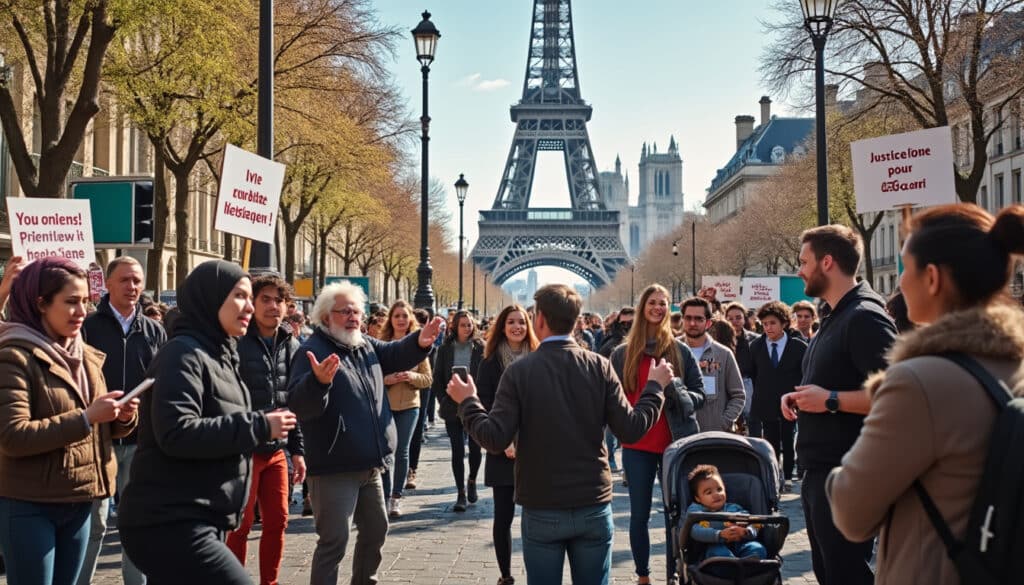
Unusual facts and social issues in Paris
Paris, with its timeless allure, is often depicted through its elegant boulevards, romantic cafes, and iconic landmarks like the Eiffel Tower. Yet, beneath this postcard-perfect exterior lies a tapestry of lesser-known stories and issues that paint a more complex portrait…
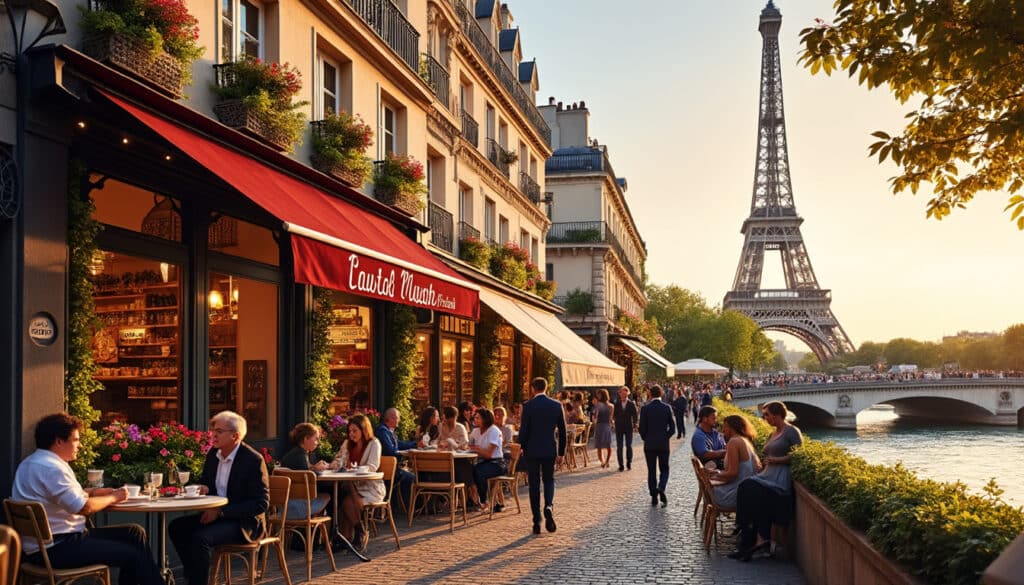
What does Paris look, smell, feel like?
Paris, often referred to as the “City of Light,” is renowned for its stunning architecture, rich history, and artistic heritage. This vibrant city is a haven for art enthusiasts and gastronomes alike. Its streets are lined with magnificent buildings, offering…

